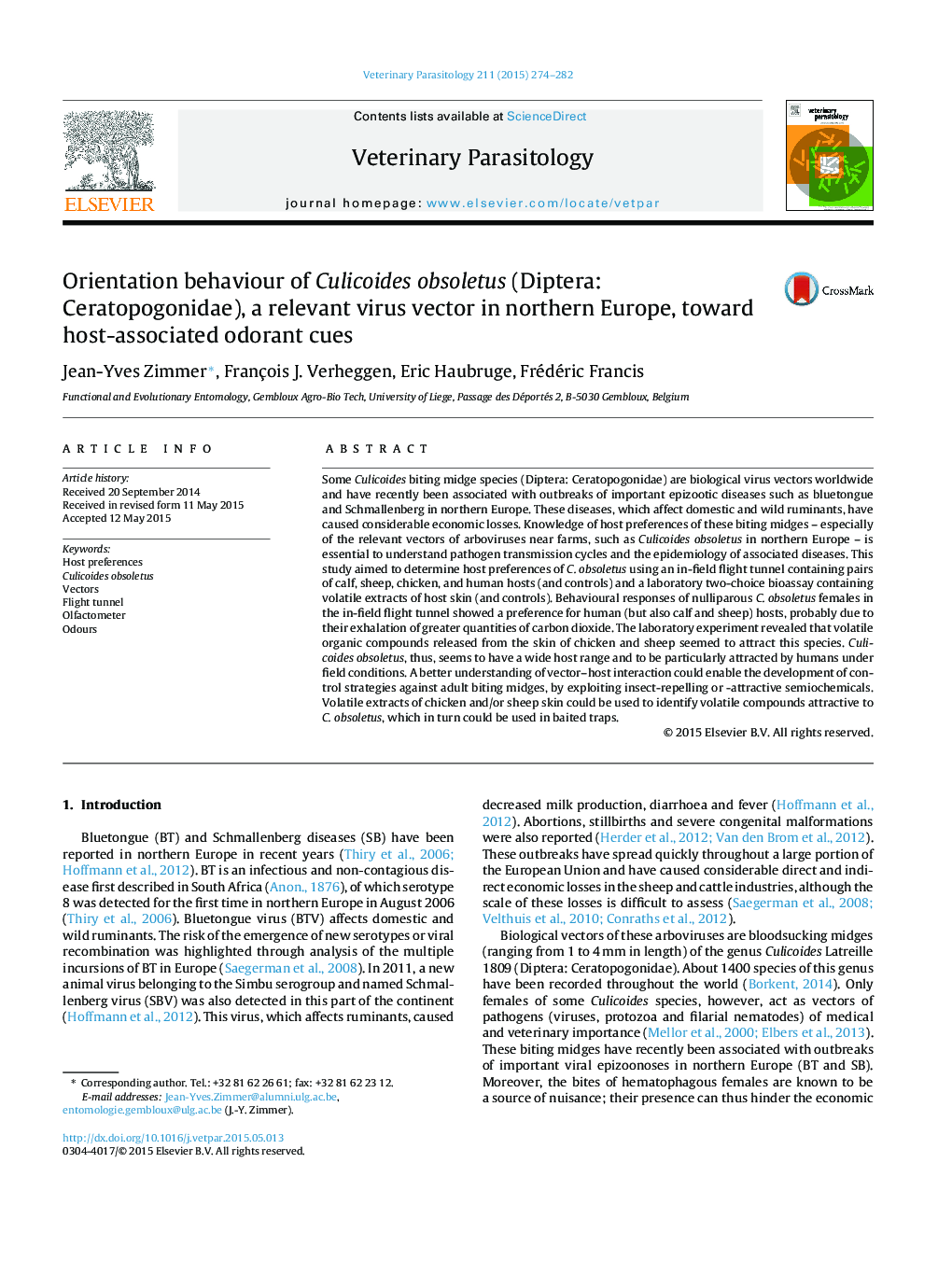| Article ID | Journal | Published Year | Pages | File Type |
|---|---|---|---|---|
| 5802427 | Veterinary Parasitology | 2015 | 9 Pages |
â¢We examine host preferences of Culicoides obsoletus using two behavioural bioassays.â¢Culicoides obsoletus seems to have a wide host range.â¢The in-field flight tunnel shows preference for human over chicken, sheep and calf.â¢Laboratory bioassay reveals preference for volatile extracts from chicken and sheep.â¢Semiochemicals could be used to develop artificial push-pull control strategies.
Some Culicoides biting midge species (Diptera: Ceratopogonidae) are biological virus vectors worldwide and have recently been associated with outbreaks of important epizootic diseases such as bluetongue and Schmallenberg in northern Europe. These diseases, which affect domestic and wild ruminants, have caused considerable economic losses. Knowledge of host preferences of these biting midges - especially of the relevant vectors of arboviruses near farms, such as Culicoides obsoletus in northern Europe - is essential to understand pathogen transmission cycles and the epidemiology of associated diseases. This study aimed to determine host preferences of C. obsoletus using an in-field flight tunnel containing pairs of calf, sheep, chicken, and human hosts (and controls) and a laboratory two-choice bioassay containing volatile extracts of host skin (and controls). Behavioural responses of nulliparous C. obsoletus females in the in-field flight tunnel showed a preference for human (but also calf and sheep) hosts, probably due to their exhalation of greater quantities of carbon dioxide. The laboratory experiment revealed that volatile organic compounds released from the skin of chicken and sheep seemed to attract this species. Culicoides obsoletus, thus, seems to have a wide host range and to be particularly attracted by humans under field conditions. A better understanding of vector-host interaction could enable the development of control strategies against adult biting midges, by exploiting insect-repelling or -attractive semiochemicals. Volatile extracts of chicken and/or sheep skin could be used to identify volatile compounds attractive to C. obsoletus, which in turn could be used in baited traps.
